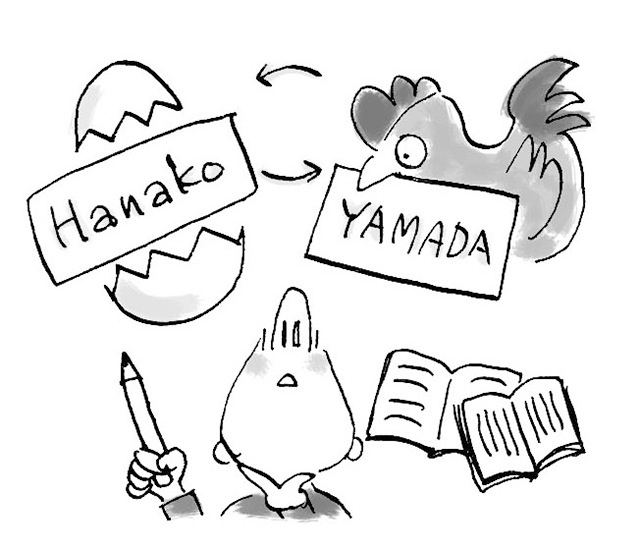Which comes first – first name or family name?

Translators are often embarrassed when dealing with names. First of all, a big problem involves whether the first name or the family name comes first. Take for example the Japanese name of “Yamada Hanako” — the family name comes first followed by the first name. On the contrary, in western countries, for names such as “John Smith,” the first name is followed by the family name. Well then, when we put a Japanese name into English, should it be “Yamada Hanako” or “Hanako Yamada”?
When a Japanese name is written in English (using Roman characters), it is common for the media to use the first name followed by the family name so that westerners will be more able to understand it. However, these days, more Japanese people are writing their names Japanese style when writing in English, using the family name first followed by the first name.
Hiragana Times has a rule in which the family name is written first (Japanese style) for names of foreigners whose family names are written first in their home countries, and then capitalized (e.g. YAMADA Hanako). Westerner’s names are written in their original form, but the family name is also capitalized (e.g. John SMITH). When writing westerner’s names in Japanese letters (katakana), the original name order is maintained. (e.g. ジョン・スミス).
In Japan, it is common to read Chinese names in Japanese style, as “Mou Taku Tou,” for the first Chinese Chairman, but in Western countries, they are read and written similar to Chinese pronunciation, as “Mao Tse-Tung.” If a foreigner says “Mao Tse-Tung” in conversation with a Japanese, the Japanese person is unlikely to know who is being spoken about. On the contrary, if a Japanese mentions “Mou Taku Tou,” a foreigner will probably not recognize the name.
